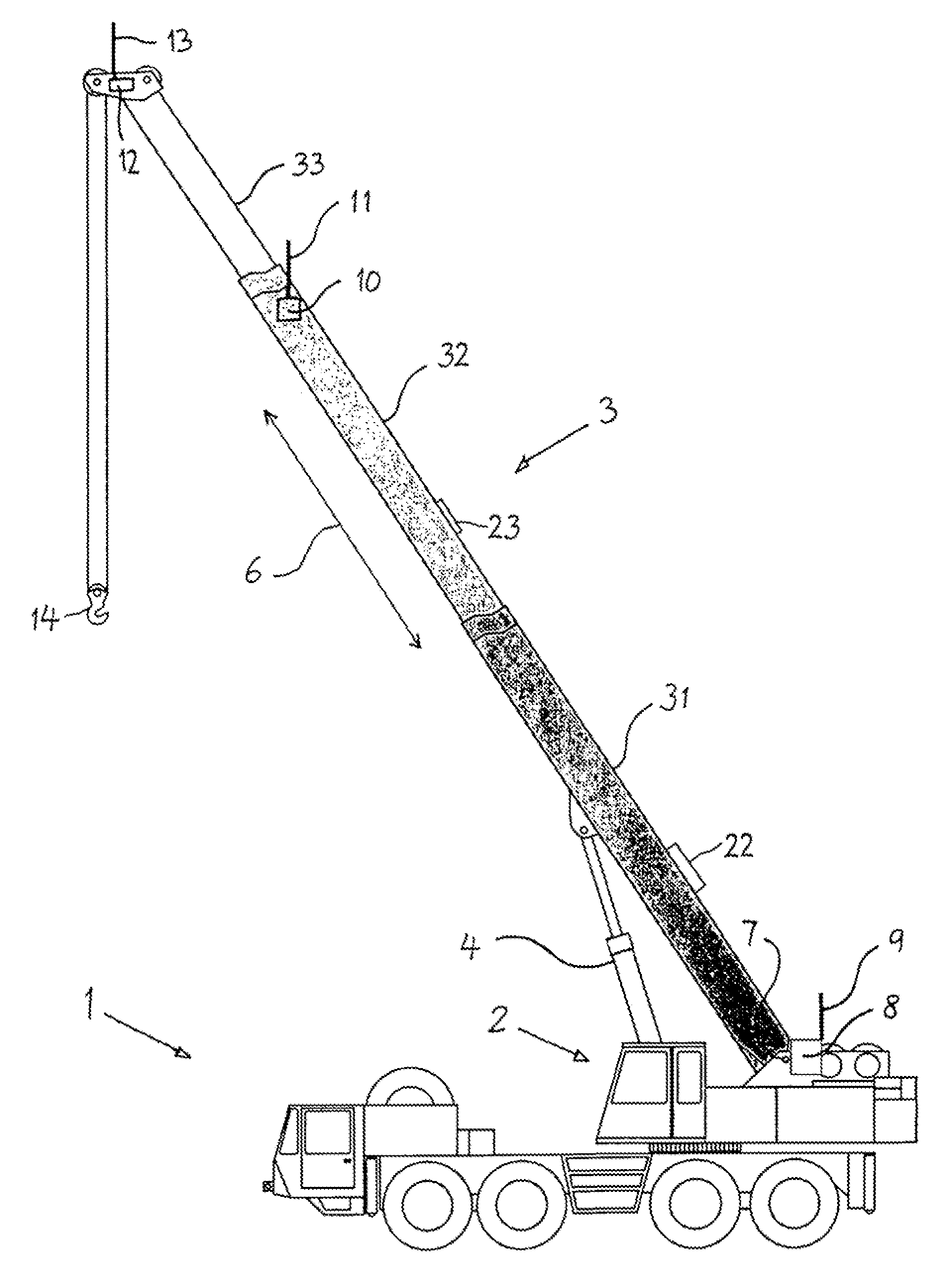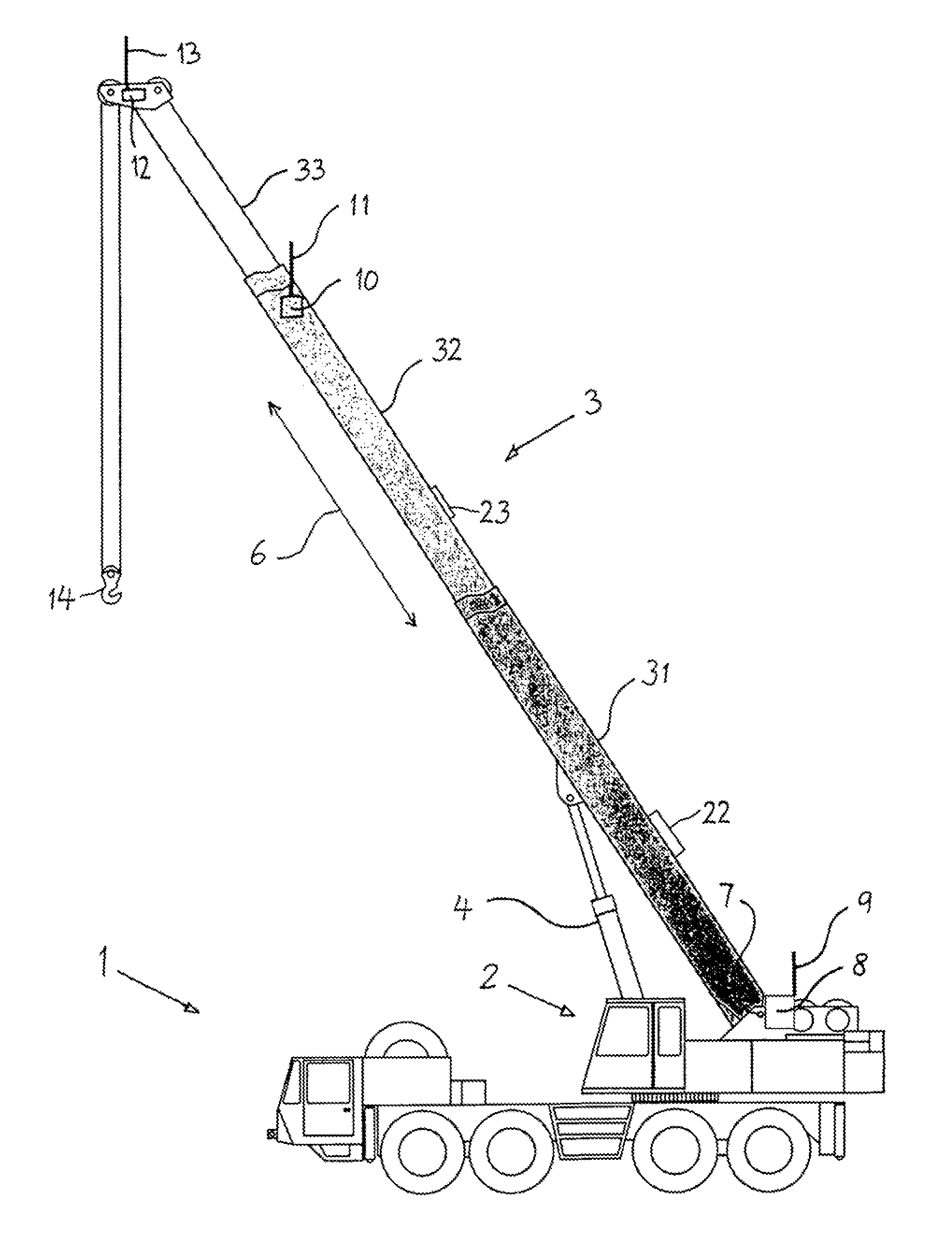Mobile or stationary working apparatus with telescopic extension arm elements whose position in relation to one another is detected by RFID technology
a technology of telescopic extension arm and working apparatus, which is applied in the direction of load-engaging elements, portable lifting, instruments, etc., can solve the problems of undesired measuring errors, inability to compact equipment elements, and clear increase of potentiometers, and achieves rapid and simple manner
- Summary
- Abstract
- Description
- Claims
- Application Information
AI Technical Summary
Benefits of technology
Problems solved by technology
Method used
Image
Examples
Embodiment Construction
[0010]The drawing shows, in as far as shown in detail, a crane with 1 as piece of mobile equipment that comprises in a known manner a rotatable semitrailer 2 as well as a telescoping arm 3 with several telescoping parts 31, 32, and 33. The first extension arm part 31 carried directly on the rotatable semitrailer 2 is pivoted up by a hydraulic unit 4. Starting from the first extension arm part 31, middle and outer telescoping parts 32 and 33 can be telescoped in a longitudinal direction 6, that is, they are designed to be pushed into or extended out of one another. The entire telescoping arm 3 can be pivoted up by the hydraulic unit 4 about a pivot axis 7 on the rotatable semitrailer 2 and be telescoped via means not further shown. Since the invention relates to the determination of the position of the individual telescoping parts 31 to 33 relative to each other and relative to the rotatable semitrailer 2, a description of the rest of the construction of crane vehicle 1 is not necess...
PUM
 Login to View More
Login to View More Abstract
Description
Claims
Application Information
 Login to View More
Login to View More - R&D
- Intellectual Property
- Life Sciences
- Materials
- Tech Scout
- Unparalleled Data Quality
- Higher Quality Content
- 60% Fewer Hallucinations
Browse by: Latest US Patents, China's latest patents, Technical Efficacy Thesaurus, Application Domain, Technology Topic, Popular Technical Reports.
© 2025 PatSnap. All rights reserved.Legal|Privacy policy|Modern Slavery Act Transparency Statement|Sitemap|About US| Contact US: help@patsnap.com


